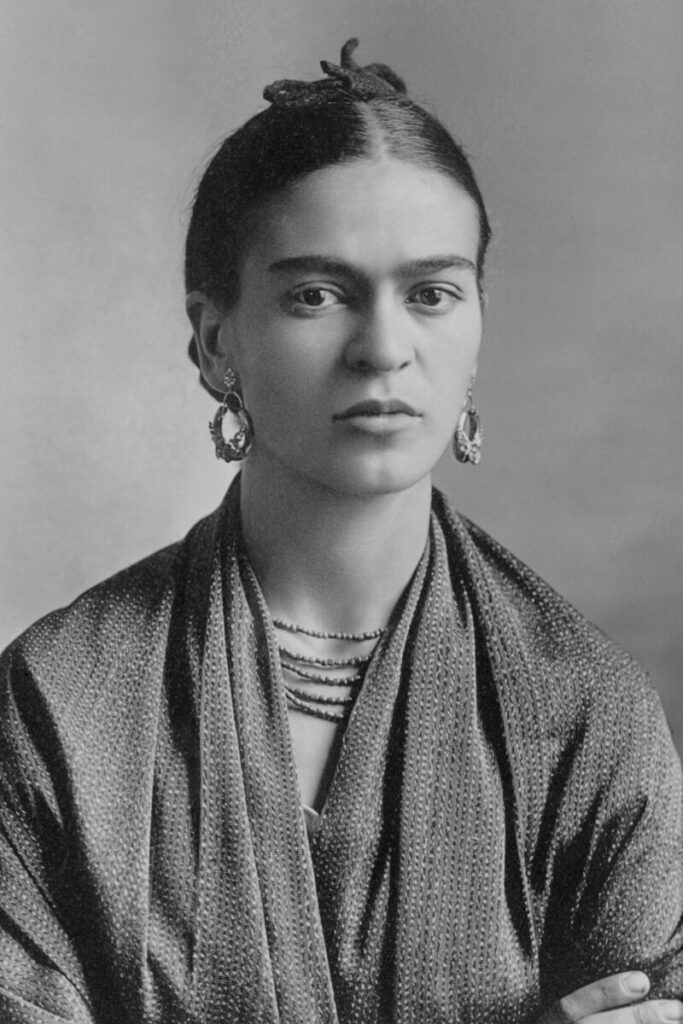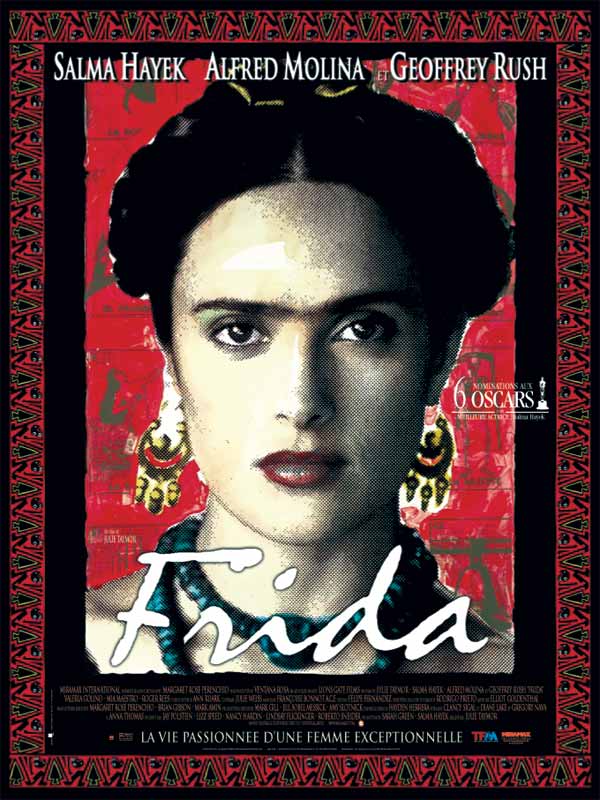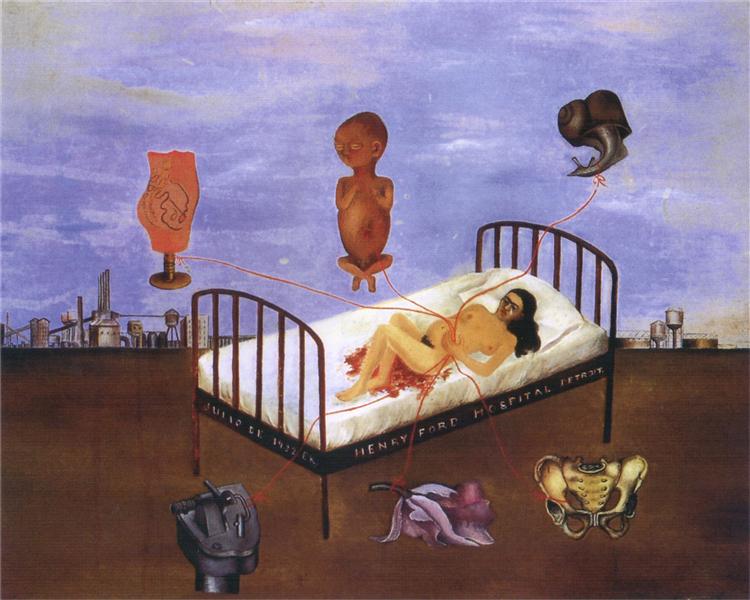Mexico’s Own: Frida Kahlo

Magdalena Carmen Frieda Kahlo y Calderón de Rivera, better known to the world as Frida Kahlo, is a Mexican painter known her for colorful and unique self-portraits with serious themes about pain, identity, and the human body. Frida Kahlo has cemented her legacy as an icon for Mexican culture and feminists around the world. As celebrated as her life and work is, however, Frida Kahlo suffered immensely. Poor health, a tumultuous relationship, and a terrible accident left her in serious pain in a physical, mental, and emotional manner. All of her experiences were explored or influenced her work.
Born on July 6 of 1907, in Coyoacán, Mexico, Kahlo father was a German photographer who moved to Mexico where he met Kahlo’s mother. Kahlo would sometimes assist her father in his studio, where she’d acquire some of her creative skills. Initially interested in medicine, Kahlo would attend the famous National Preparatory School in Mexico City where she would be one of the few female students in the school. There, she joined the Young Communist League and Mexican Communist Party, as well as meet her future husband: Diego Rivera.
I’ve always known who Frida Kahlo was. As a Mexican American, I saw her work and her influences around festivals, parades, and parties celebrating Mexican pride. But I remember in high school for an art class, we watched Frida, the biographical movie starring Salma Hayek. I was completely reeled in by her tragic backstory.

She fits the bill of the stereotypical “tortured” artist, but Frida Kahlo pain in her work felt genuine. She projected all her hurt onto her paintings, and while I enjoy the work she has done, it’s terrible that she had to go through that. One of her most recognizable works is called La Columna Rota, translated to The Broken Column depicts a big, cracking pillar in place of her spine. She’s covered in pins and tears flow from her face. She’s literally a broken woman. Frida Kahlo went through life-long chronic pain. At age 6, she contracted polio, leaving her bedridden for several months, and with her right leg shorter than her left. The only thing that might have been worse is her accident at 18 years old. On September 17, 1925, the bus that Kahlo was riding was struck by another vehicle. A steel handrail impaled her hip, and she suffered several critical injuries. It was during this time that she began to paint, to pass the time and have a creative outlet. Similarly, Kahlo painted Henry Ford Hospital after a miscarriage. The painting is of Kahlo in a hospital bed with a fetus, flowers, and a pelvis attached to veins floating around the room. Kahlo always wanted children, but after two miscarriages, she felt helpless. Her infamously volatile relationship with Diego Rivera was also an extreme burden for her mental and emotional well-being. Painful experiences like these fueled her art.

Frida Kahlo would soon be recognized for her talent all over the world. In 1933, Kahlo and her husband Rivera were commissioned by Nelson Rockefeller to create a mural at the Rockefeller Center. Man at the Crossroads was made in the RCA Building, but Rockefeller stopped his work when Rivera tried including Vladmir Lenin in the painting. They both returned to Mexico. They lived in a house separated by a bridge where each of them would get their own space. In this new house, they would host André Breton. He loved Kahlo’s work and described her as a surrealist artist in the brochure for her first solo exhibition at the Julien Levy Gallery in New York. That same year, 1938, the world-renowned Louvre acquired The Frame by Kahlo. This made Kahlo the first 20th-century Mexican artist included in the museum. Her first solo exhibition in Mexico was probably not what she envisioned. Bedridden at the time, Kahlo arrived in an ambulance and attended the ceremony in a bed set up in the gallery.
On July 13, 1954, Frida Kahlo passed at her childhood home. Reports said she died of a pulmonary embolism. However, theories have risen that she committed suicide. Her final months were anything but pleasant; Kahlo suffered from gangrene in her right foot and was hospitalized in April of 1954 with bronchial pneumonia. After her death, her work and legacy exploded. The new Feminist movement of the 80’s championed Frida Kahlo for her creative expression from a woman’s view. Her childhood home was also opened as a museum in 1958. And in 1983, Hayden Herrera published A Biography of Frida Kahlo. She didn’t live to see the true extent of her influence, but Frida Kahlo’s work and legacy lives on as an enduring icon for feminists, Mexico, and artists from all walks of life.

Personally, I’m not very big on visual art commonly seen at museums. However, Frida Kahlo has always been an interesting character for me. Through her art, one might think that she was an edgy artist who aims for shock value mostly. But through studying her life and work, I see a woman who was suffering. Life has beaten on Kahlo at every turn. Poor health, miscarriages, and a rocky marriage shaped Frida Kahlo, and not always in a good way. While her art is beautiful and emotionally significant, it came at a cost. Her art was a tortured mind trying to make sense of why the world always seemed to be against her. It’s intriguing seeing how Kahlo’s mind worked, but it was also heartbreaking. I think the most important lesson from Kahlo’s life however is that art is the best expression of oneself, no matter how bizarre it might look. For Kahlo, her voice was her paintings, and thankfully, it’s being heard by people all over the world.
Frida Kahlo’s biography on The Art Story
Frida Kahlo’s biography on Britannica
Museum of Modern Art’s biography on Frida Kahlo
Frida Kahlo’s life on Biography.com


